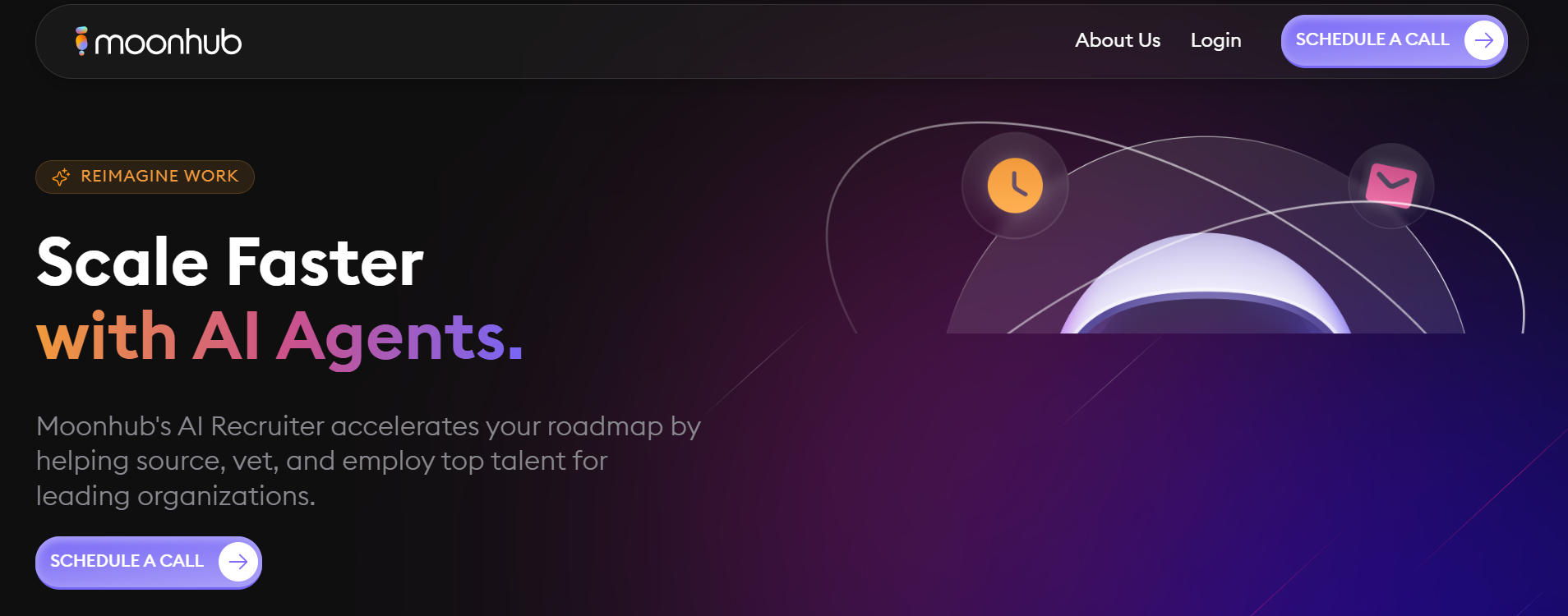-
 观点
观点
Google绩效管理真经:OKR是怎么运作的?(深度长文)
来源| HR互助社
谷歌是一家美国的高科技公司,目前其品牌价值已经超过苹果,成为全世界高科技公司的之最。
除了它优秀的企业文化外也离不开它独特的绩效管理体制。谷歌在过去的很多年里面,它的绩效也是一直在不断地改善,包括打分、目标设置等。
在公司绩效管理演变过程中,谷歌的一些核心概念汇总成一种语言,它适用于任何公司。
正确地设定目标
要让目标众所周知,目标要有野心。
收集同事反馈意见
有一些线上工具,至少有谷歌表格,可以用于进行调查,整理结果。
评估流程中引入校准流程
谷歌倾向于经理可以坐在一起探讨的会议,作为一个团队共同审评员工,这样需要更多的时间,但评估和决策的过程更可靠、更公正。
采用这样的方式,人们可以坐在一起,加强交流,巩固公司珍视的价值,有利于公司文化的发展。
把奖励分配谈话和员工发展谈话分开
两项谈话混为一谈会扼杀学习的动力,不管公司规模多大,这一点都适用。
将关注点放在真正重要的事情上
依据目标对绩效进行公正的校准,开诚布公地指导员工学会如何提高。
01
Google人力资源管理体系
绩效管理的目的是利用可利用的资源使企业效率更高,而人力资源管理则使企业人的工作变得更有效率。
随着科学进步、发明创造带动高科技产业的快速发展,现代企业管理进入了一个新的时代,商业竞争更多的变成了人才竞争。
企业管理者越来越意识到人才是企业竞争力的核心,人力资源逐渐成为影响企业发展最重要的资本,越来越收到公司的重视。
一个公司之所以成为伟大的公司,并不是因为这个公司的创始人多么伟大,而是因为他们的每一个员工都很伟大。
在互联网时代,传统的层级招聘制度,业务负责人确认后,直接报备行政人员即可的模式,已无法满足企业对人才的要求。
同时评估、一起面试、共同定夺,已成为许多新兴互联网创业公司的招人模式。
在信息技术高速发展的当下,Google的人力资源管理,不论是人才引进使用,还是人力资源分配,始终走在世界的前列。
Google的人力资源管理有着其独特的特点,企业有着明确的核心能力、人力资源战略规划、职位分享与职位评价、绩效管理及薪酬管理。
Google公司在人力资源管理这方面有很多值得我们去借鉴和学习的地方,接下来我们首先要了解的是谷歌人力资源的整体体系。
●谷歌人力资源体系六大模块
谷歌人力资源体系包含六大模块,分别是:年度绩效评估、月度绩效回顾、年度敬业度调查、年度经理人反馈、目标设定OKRs以及优秀人才奖励制度。
年度绩效考核
它的考核周期是一个完整的财经年度,中间包含了半年度的回顾的展望。
月度绩效回顾
主要是经理和下属一对一的面谈,面谈内容包括一些员工的职业发展、员工培训辅导等。
年度敬业度调查
主要查看员工对公司的忠诚度怎么样。目前国内有很多公司也做年度调查,主要包含年度敬业度调查和年度公司满意度调查。
年度经理人反馈
类似于360度绩效考核中下属对上级的考核,主要是经理人对公司管理上满意度的测评和反馈。
目标设定OKRs
当Google还是一个很小的创业公司的时候,就开始在内部使用一种员工评级系统——OKR(目标与关键结果)。这也是Google绩效管理最有特色副地方。
优秀人才奖励制度
公司为了深入实施人才战略,进一步激发各类人才的工作积极性和创造性,而执行的一种人才奖励制度。其包含奖金、薪资待遇和公司股票期权等。
02
Google绩效考核体系
绩效考核通常有了两个目的:
一方面正确评估员工的实际绩效和行为,给予及时和适当的奖励或惩罚;
另一方面为员工的进一步开发提供依据,根据绩效评估结果找到员工的不足,从而提供 适当的培训和辅助,帮助员工提升和更新知识结构与技能,进一步提高素质,创造更好的绩效。
每个成功的公司都有自己的绩效考评体系和特定的设施方式,Google也毫不例外。Google绩效考核由两部分构成,分别是:业绩考核和能力考核。
●谷歌绩效考核(谷歌工作业绩考核)
Google绩效考核体系(Google工作业绩效考核体系)是由五个重要部分构成的连续过程,这五个部分分别是:目标设定、自我评估、同事评估、校准会议、绩效面谈。
五者之间彼此之间存在密切联系,其中任何一环节在执行上出现问题都会对整个业绩考核体系带来负面的影响。其考核流程示意图如下所示:
目标设定
在绩效考核中,每位评估者都应明确了解自己所应达到的目标。
自我评估
通过自我评估,员工可以反思自己的绩效表现,认识自己的优点和不足。
同事评估
来自团队内部其他同事的评估会给绩效考核带来一个崭新的观察角度,同时同事评估也是该员工在团队合作绩效方面的第一手资料,同事评估通常有几个人参与,这些评估包喊很多人的观点,评价的客观性比较强。
校准会议
在员工自我评估、同事评估之后,这些评估内容会交给总理,总理进行打分,打完分后,所有的这些打分最后要进入到校准会议进行最后的审核。
绩效面谈
通过校准会议确认最终考核结果,然后根据出来的结果,经理和员工进行面对面的绩效的面谈。
●谷歌能力评估
能力是指对个人和公司绩效至关重要的、可辅导的、可观察的、肯衡量的,以行为方式表现出来的组合,核心能力反映了公司的价值观、文化和经营准则,是所有员工应该具备和展示的。
谷歌能力评估标准包含六个方面,分别是谷歌人、解决问题、执行力、思想领导力、新兴领导力、存在感。
谷歌人
即符合谷歌价值观的员工。每家公司都希望员工符合公司的价值观价值观的人,谷歌的价值观可以简单概括为:以用户为中心,其他一切水到渠成;心无旁骛、精益求精;快比慢好;网络的民主作风;获取信息的方式多种多样,不必非要坐在台式机前;不做坏事也能赚钱;信息永无止境;信息需求,没有国界;没有西装革履也可以很正经;没有最好,只有更好。
解决问题的能力
公司员工的主要职责就是解决各种各样的企业问题。只有具备了关键的问题解决能力,员工才能够成为公司所需要的合格人才。
执行力
执行力“就是按质按量地完成工作任务”的能力。个人执行力的强弱取决于两个要素——个人解决问题的能力和工作态度,能力是基础,态度是关键。
思想领导力
思想领导力是指具有创新的思想从而能引领他人的能力。思想领导力的两个关键要素是创新和引领,公司希望员工能够成为某个领域的专家,并把这些专业知识分享出去,对他人产生影响,引导潮流的能力。
新兴领导力
在谷歌有很多年轻的员工,他们虽然没有带领团队的机会,但是可以通过在项目里面,带领一些虚拟的团队,不断地锻炼、提升自己的领导能力。
存在感
主要指员工在组织当中发挥自己的能力,体现自己的价值。我们知道能力是一种潜在的特征,谷歌希望公司的员工能够把这些潜在的特征表现出来。
03
Google目标设定OKRs
OKRs全称是Objectives and Key Results,即目标与关键成果,是一种精密严谨、完全数值化的内部目标考核制度。
它能够将目标由上而下贯穿到基层,所有员工每个季度的考核评分通过员工资料库对内公开(包括CEO的OKR),是部门任务协作的一个手段。
OKR实际上并不是一种绩效考核制度,而是一种目标管理方法。
OKR的思路源自德鲁克的目标管理,1954年,德鲁克提出了一个具有划时代意义的概念——目标管理(Management By Objectives,简称为MBO),它是德鲁克所发明的最重要、最有影响的概念,并已成为当代管理体系的重要组成部分。
作为德鲁克忠诚信徒,英特尔公司的总裁安迪·格拉夫,打着“HOM(High out put Management)”的大旗,发明并推行了OKR。
在谷歌成立不到一年的时间,谷歌的董事、投资者约翰·都尔(John-Doerr)把这套流程带给了谷歌,并一直沿用至今。
在谷歌成功实施后,OKR方法被其它知名IT企业借鉴,这些公司包括Linkedin、Zynga等,OKR逐渐受到越来越多的IT公司认同。
目前除了谷歌、英特尔、甲骨文、领英之外,国内的豌豆荚、知乎都开始使用OKR的管理模式。
Google目标设定OKRs的执行程序包含有:设定目标、形成目标系统、考核打分、评分公开的流程。
●谷歌OKRs金字塔体系
谷歌的目标设定需要公司所有员工参与,彼此之间要相互支持,相互配合。目标要有年度OKRs,也有季度OKRs。
季度OKRs一旦确定就不会轻易改变,年度OKRs统领全年,但并非固定不变,可以在财经年度过程中进行调整。其金字塔体系如下图:
全员设定
公司、部门、管理者和员工均从战略开始设定自己的年度目标和季度目标。
从上至下
目标的设立顺序应该是总部、公司高层、团队到个人。
因为个人想做什么和管理者想让他做什么一般来说是不会完全相同的,员工可以通过先查阅上层的目标,在自己想做的事情范围内找到能对公司目标有利的部分,将他拿出来和自己的管理者进行讨论,做权衡取舍。
很有可能的是,自己想做的东西甚至会变成公司今后改变的发展方向。
目标共识
目标必须是在管理者与员工直接充分沟通后的共识,没有达成共识的目标不能算作目标,目标的设定以达成共识为终点。在目标设定OKRs的时候,员工跟经理之间是一个双向沟通的过程,经理不能命令员工,员工也可以提建议。
目标具体可衡量
目标设定最基本的原则,就是SMART原则,不管做KPI、MBU还是OKRs也好,我们设定的时候都是需要符合SMART原则的。
例如,不能说笼统地说“我想让我的网站更好”,而是要提出诸如“让网站速度加快30%”或者“融入度提升15%”之类的具体目标;不能说“使Gmail达到成功”而是“在9月上线Gmail并在11月有100万用户”。
有野心的目标
OKR的精髓就是鼓励员工突破自己的能力,很都容易就能达到的目标就不要写了,需要跳起来才能实现的O,才是合格的O。
个季度之多设定3个左右的O,目标太多会令人焦头烂额。
每个O下面设定KR的指标也最好别拆过4个。保证每个人手上OKR工作单的篇幅都简介明了,没有篇大论。
●谷歌OKRs打分
每个员工在每个季度初需要确定自己本季度的OKRs,在一个季度结束后需要根据自己这个季度的工作完成情况给OKRs打分。
OKRs打分跟最后年度的绩效等级没有直接关系,另外OKRs的打分也不跟奖金挂钩、不跟年薪挂钩、不跟很多的考核福利挂钩。这个打分其实是让经理更清楚的员工的工作能力,以及工作的一个状态。
真正的绩效评估会在每半年公司会对全体员工进行一次,主要是 review(复核)员工过去半年的业绩,并根据评估的结果变更 Job Ladder(业务职级)和薪酬。
谷歌的目标设定OKRs里面,最重要的一个特点是它的透明制度,所有员工的目标设定OKRs都是全公司公开的。
每个季度开始的时候,公司CEO先设好公司OKRs,放到自己的资料库里面,每个人都能看到。紧接着公司总裁、部门经理、公司员工自上而下设定自己的OKRs。
OKRs的透明制度一方面可以做到更为公平和透明,另一方面也给每位同事提供了更好学习和成长的样本,激励大家在工作中迎接更高质量的挑战和严格要求自己。
一般来说,1为总分的评分,达到0.6~0.7是比较合理的。如果0.4以下,说明你不及格还需要努力。
如果你的目标得了一分,也就是你的目标是百分之百完成的话,谷歌反而会认为你的目标定的太容易、太低了,经理会里质疑你。谷歌OKRs分值示意图如下:
04
员工自我评估
谷歌360度绩效考核通常包含五个主体,分别是:直接上级对下属的评估、员工自我评估、同事评估、下属对直接上级的评估、顾客对员工的评估。
员工自我评估也就是员工自己对自己的绩效表现进行估算。如果员工理解了他们被期望达到的绩效水平以及用来考核他的绩效标准,他们就有可能对自己做出最准确的评价。
自我评估有利于员工反思自己的绩效表现,使员工更好地认识到自己的优点和不足,从而提高员工的自我管理、自我改进、自我提高的能力。谷歌的自我考核的模板如下:
05
同事评估
同事评估,即与被考评者一起工作的同事对其进行考评。
使用这种考评方法的前提是被考评者所在的部门或团队保持了一定时期的人事稳定,而且成员完成了需要相互影响的任务。
在不同的企业,同事之间的合作关系也有所不同。
若合作形式是项目小组,其中一名成员做事拖沓,就会打乱其他人的时间安排,导致小组整体绩效下降。这种情况下,同事考评对揭露问题、鞭策落后起着积极作用。
在谷歌360度同事考核中,同事考核是获得该员工团队合作的绩效方面的第一手资料,同事考核维度主要包含:五项核心能力的考评、具体项目贡献的考评、优缺点等。
其考评维度如下图所示:
06
Google绩效校准会议
谷歌现在用的绩效考评体系等级是五级考评,从低级到高级依次是:需要改进、一贯符合预期、超过预期、超过预期很多、杰出。
谷歌的五级考评并非真正意义上的强制分布,它的考评等级最低档是需要改进,其余四个档次都是表现比较好的。考评体系主要倾向于激励、鼓励员工。
当经理对员工的五级评估确定之后,每个经理需要把自己考核的结果,送到一个会议上,这个会议叫校准会议。
谷歌绩效校准会议通常是几个经理坐在一起,向老板进行阐述给员工不同评估等级的原因,员工杰出的地方是哪里、优秀的事情有哪些。
假设A经理对下属某员工的评估等级进行阐述后,B经理或其他经理需要给反馈,表明同意与否的观点并说明理由。
作为经理不仅需要向上司也需要向他同级的经理说明他对员工评估的准确度。
通过绩效校准会议,确保所有经理打的分数都进行了一个横向的比较,从而做到公平公正。
目前很多公司运用校对会议,比如说GE,我以前所服务过的欧洲公司,包括我自己我也组织过很多的校准会议。
注意事项:
在绩效校准会议前,经理需要注意自己对员工的绩效评估结果是否考虑周详。经理在评估员工的时候,谨记下面七种经常易犯的错误,尽量去避免这些偏差。
以偏概全
不能因为员工一个优点就认为员工表现是非常好的。
逻辑偏差
不能因为他有A能力,你就推断他肯定有B能力。
对比偏差
作为一个新员工,你不能跟平等的去跟一个老员工进行对比,他们不在一个级别上面。
以印象好坏
不要因为你最近对某个员工印象比较好,所以你给他的打分就比较高。
对待员工过于严苛
认为每个员工跟自己比,都表现比较差,所以打的分数都是不合格的
对待员工过于宽松
认为所有的员工工作这么辛苦,算了,我给大家都打一个高分吧。
对待员工采用中庸之法
经理善于做老好人,他会说,算了我给每个人都打个合格吧。
07
Google绩效面谈
绩效校准会议结束之后,在公司层面,意味着公司审核批准了每个员工的考核结果,接下来的事情是经理要把考核结果跟员工进行面谈。
在谷歌绩效面谈中分为两次面谈,第一次是绩效结果面谈,侧重员工的职业发展;第二次是加薪和晋级面谈。
因为在谷歌公司看来一个过于关注薪资和晋升的员工,未必是个好员工,所以他们把这两个分开来谈。两次面谈时间间隔为一个月左右。
在国内,很多公司把考核结果和加薪、晋级合在一起面谈。
为了保证绩效面谈有效性,谷歌通常公司会对经理进行培训,告诉经理应该怎么谈,谈论的主题是什么,怎样才能更和谐的沟通,如何改进绩效计划、实现计划目标。
绩效面谈经理准备工作:
在绩效面谈之前,经理需要做好下面四个方面的准备。
明确面谈目的
第一次面谈的目的是为了提高员工的工作绩效,让员工了解自己的优点和需要改善的地方;第二次是关于加薪和晋级的面谈。不要把俩者混在一起来交谈。
明确谈话结构
整个谈话的过程,应先谈什么,再谈什么。
比如说先让员工回顾他的一个整年的业绩,第二肯定要告诉他考核的结果,第三你可能表扬他哪些地方做的比较好,第四你要提出他需要改善的地方,第五我们可能要谈一些发展计划。
经理在面谈过程需要非常清晰、有条理的传达给员工,也可以在面谈前把要表达的内容列成一张表。
收集和整理有关绩效的各种真实信息与事实
经理在绩效面谈前,要做好充分的准备,包含绩效评价表格、工作日常情况记录和总结、该评价周期的绩效计划和员工绩效评价的基本结果以及员工的基本信息。
在面谈过程中,所有的绩效评价结果都应用事实、数据来说,要以事实为依据,而不是凭主观印象,我认为你做得不错,我认为你有问题等。
学会提问,鼓励队员敞开心扉
在面谈过程中,经理要掌握一定的面谈,要把更多的时间留给员工,让员工敞开心扉,谈一谈他的困惑,谈一谈他需要帮助的地方。经理说的时间稍微短一点,员工说的时间稍微长一些。
-
 观点
观点
学会这四点,助你成功转型 “数据驱动型” HR领导者
文| Bill Petti
来源 | gallup
文章摘要
1、描述性数据本身并不能让HR部门的领导者取得成功
2、正确的分析确保HR的决策推动组织目标
3、HR领导者需要成为世界级的人才绩效专家
你有很多有关员工绩效的数据。你拥有尖端的仪表板和无缝的报告功能。这使你以数据为导向,对吗?
不完全是。
优化你的决策不仅需要回顾性分析
你需要知道员工为公司工作了多久,以预测他们将留下的可能性并确定最能影响他们留任的标准。你还需要建立识别和量化数据中隐藏信息的能力,从而提出规范性建议。
为了以数据为导向,HR领导者需要来自内部和外部合作伙伴的预测性和前瞻性见解。
你还需要进行严格的分析,将描述性数据转化为考虑不同因素。
最后,你需要正确的分析。
如果HR部门的领导者想要进入战略决策者的行列,就更应该遵循上述建议。
通过正确的分析,领导者可以确保人力资源决策不仅符合大局的组织目标,而且还能推动这些目标。
人力资源领导者可以通过以下四种方式查看描述性数据,从而创建数据驱动的文化。
1、你需要联系人力资源决策与业务成果
假如你了解到,去年以来,60%的员工已经提高了内部客户满意度分数,但这并没有告诉你促成了哪些改进,或者某项绩效计划是否有效且值得投资。
单纯的描述性数据并不能使HR部门的领导人得出本来难以确定的结论或确定最佳的行动方案。
更糟糕的是,描述性数据有时会误导HR领导者。
未计数的变量 - 特别是与决策者固有的偏见相结合 - 可以隐藏数字背后的故事。因此,领导者可以很容易地推断出不正确的结论,或者采取错误的干预措施来处理这些问题。
例如,实施基于分析的中层管理人员招聘的HR部门可能无法在倡议的前六个月内看到团队绩效的实质性改善。
然而,这些HR主管可以通过严格的统计分析和预测发现,干预措施不仅要提高员工绩效,还要加强员工与经理的关系。
2、你需要被假设驱动
许多善意的人力资源主管通过简单引用其许可报告平台附带的标准报告来确定哪些指标和分析很重要。
这种狭隘的焦点极大地限制了人力资源数据的用处。
人力资源部门的领导者应该回过头来问自己:“我需要回答哪些主要问题?我需要解决哪些迫切问题?”
这些问题的答案决定了HR领导者进行哪些分析。
换句话说,人力资源领导者需要被假设驱动。
他们需要首先明确他们的问题,对这些问题的潜在原因进行假设,然后进行适当的分析。
预先的战略投资将带来长期的收益,因为当领导者具有强大的预测性洞察力,才能够解决特定的业务问题并促进业务目标的达成。
3、你需要综合内部和外部的数据
你对内部数据可能非常熟悉 - 这些数据很方便访问,易于解读和易于掌控。
但在数据驱动的世界中,仅仅依靠内部数据就类似你的一只胳膊绑在背后就开始打拳击赛。
外部数据可以为决策提供丰富的信息,并阐明人力资源举措的有效性。
例如,人力资源部门的领导可以根据当地失业率或竞争职位的工作岗位的流行情况,评估某些市中心的营业额的潜在风险。
为了从外部数据中获得有效正确的见解,人力资源领导者应该与业界领先的、具有分析专业知识和相关数据集的数据组织建立关系。
合适的合作伙伴可以帮助您提炼出关键问题和假设,然后审查所有相关数据 - 从更广泛的市场数据到当地人口统计数据 - 定制分析,回答最核心的问题。
4、你需要成为相关领域的权威人士
在Gallup的经历中,许多企业领导者不愿意让HR领导者参与战略讨论,因为这些HR领导者的观点根植于经验,而非硬性数据和分析。
HR领导者应当是经验丰富的、并且在人力资本上有卓越投资回报的权威
如何可靠地衡量和预测这些驱动因素
也就是说,HR领导者负责提升员工体验,最大限度地提高人力资本投资回报率,预测员工成果,并将人力资源举措与领导者更广泛的业务目标进行量化关联。
HR领导者需要成为有关组织中与人员和绩效相关的所有事务的权威人士。
它们应该成为人们需要了解的指南,哪些分析标准提供了强有力的答案,以及如何最好地交流这些发现并将其整合到业务的所有方面。
为了实现这种定位,HR领导者必须专注于选择能够提升其知名度和提升人才专家声誉的研究和数据专家。
成为数据驱动型领导者刚开始看起来可能令人望而生畏,毫无疑问,建立必要的专业知识需要时间和精力。
但是,希望在其组织内的战略问题上有更大发言权的人力资源领导者将因其投资而获得回报。
-
 观点
观点
如何让招聘成为组织能力提升的利器?
文| 老唐
来源| 吏部小宝(ID:dbxl_wxb)
与其怨天尤人“招聘工作价值无法凸显”,不如聚焦对组织能力建设的帮助。这或许,是一条柳暗花明之路。
久未联系的朋友D总让我帮忙转发他朋友圈里的招聘文案,末了附了一句,“最近底下的几个招聘专员都在提离职,没办法只得靠刷脸,出这招了。”
让我奇怪的是,D总所在的企业无论规模、待遇、行业前景、盈利状况都属于佼佼者,最近才拿的一轮融资,加上相对来说,人力资源的岗位稳定性是比较强的,一个、两个的人员离职属于正常,为什么会出现几个招聘人员都在同一时间离职呢?
此事唯有D总能给解释啦。
原来,D总所在的企业近期内部做了一次经营情况的复盘,过程持续比较长,争议撕扯也比较厉害。不过,不约而同的观点之一是,当下的组织能力本身与经营发展、战略落地的匹配度上,出现了清晰可见的裂痕。
D总作为负责人力资源的一把手,当下就坐不住了,马上找来OD和BP的下属了解具体情况,分析来分析去,招聘成了“背锅侠”——无论是用人部分的反馈,还是HR体系的评估,都认为上半年来招聘的人员太过普通。
可想而知,招聘的兄弟们彻底炸了:一方面是要应对来自内部的指责以及考核的失败,另外一方面过于挑剔的面试导致招聘人员的工作量倍增,苦不堪言的招聘专员们只好纷纷选择离职。
上面的案例纯粹归结于招聘的问题有失公允,但无法否认的是,作为HR专业模块之一,招聘在企业内的价值存在感不再有往日的风光。
一方面,同属于人力资源的专业模块,招聘人员的流动性普遍要高于其他模块;另一方面在人力资源管理主动变革的过程中,OD、三支柱、HRBP这些火热的名词已然让招聘的星光暗淡了不少。招聘逐渐沦为刷简历、打电话、约面试的事务性角色。
难道招聘真可能会被边缘化?或者说,招聘本身该如何让价值重新凸显呢?我想谈谈自己的思考。
首先来谈,招聘本身与组织能力的关系。
“杨三角”的理论中,将公司的成功归结于战略✖组织能力。基本观点是,这两个因素是相乘关系,而不是简单的相加关系,其中一项不行,企业就无法获得成功。事实上,战略可以被模仿,但是组织能力却难以在短期内得到模仿。而事实上,很多企业的兴衰往往不是因为战略的失败,而是组织能力的失败所致。
那么招聘和组织能力的关系是什么?
杨三角的观点认为,组织能力的关键在于“员工能力”(即会不会的问题)、“员工思维”(即愿不愿意的问题)、“员工治理”(即容不容许的问题)。
一般来说,招聘与组织能力的关联,就体现在“员工能力”这一角上,通过能力的厘定、能力的审核后,可以得到需要提升的能力,而针对能力的提升基本就通过5B来完成。
build:内部培养现有人才
buy:从外部招聘合适的人才
bounce:淘汰不胜任的人
bind:保留关键人才
borrow:借用外部人才的力量
若单纯从快速提升员工能力的角度看,“buy”无疑是5B中见效最快的一招,而这本身就是招聘的活儿。因此招聘工作就该是组织能力建设的一部分,那又何来边缘化一说呢?
其次,我们来看大多数的招聘是不是能够有效的提升“员工能力”?
试想一下,当大多数招聘人员在接到招聘任务拿到JD后,即开始进入了执行的过程。在大量的筛选、邀约、面试后,顶住用人部分的夺命连环催后,终于让候选人顺利入职。相互皆大欢喜,招聘人员也开始长舒一口气,又开始进入了下一个岗位的轮回中。意外的是,在人员盘点时,往往得到的结论是往往似乎是“候选人到位了,但却并没有发挥出预期的价值”,结果招聘又被沦为“背锅侠”。
回顾问题的本质是,在执行招聘的过程中,对于“业务需求的理解”与“人才素质的把握”上是不是出现了问题?
对于创业公司来说,对于人的需求是非常特殊的,特别是一些关键岗位,更需要的是“超配”,而这种“超配”人员往往是组织能力提升的重要部分。某种程度上说,招聘工作的亮点就在于“超配”人员的招聘完成情况——相信很多的招聘人员并没有完全意识到这个点。
每个公司都有自己的业务形态和关键业务,每一类岗位族群中也都有关键岗位,我的建议是招聘人员需要先梳理自己手里的岗位,看看哪些是应该“超配”的,哪些只需要“标配”,甚至还有些可能需要“低配”的。每一种配置的招聘,应该对应不同的招聘渠道。
对于应该“超配”的岗位,我直接建议多增加猎头推荐的比例。不要为了省下一些猎头费用,而让“超配”人员的到岗推迟。控制招聘成本的亮点,与组织能力得到提升的亮点相比,boss一定会更关注后者。
另外,对于“超配”人员的要价正常来说也会相对较高,往往我们的招聘人员在此处就被卡壳了——因为候选人的身价比较高,只好望而却步。当然,薪酬政策不只是招聘人员能决定的,但为了“超配”人员的引进,招聘人员力所能及的去争取确是必要的。在老板的眼里,对于“超配”的候选人来说,多出20%-50%的溢价真的就出不起么?
对于成长型公司来说,boss们往往会关注一个词“人才密度”。对于这类公司来说,在”超配“人员们的引领下,业务模式已经初步跑通,接下来要做的更多是复制,而复制的核心在于基础能力的标准化。在这个时候,往往人才密度就显得尤为重要了。
作为招聘专员,就必须很清楚自己的业务形态是属于什么阶段,在招的岗位属于什么范畴。在讲究标准化的阶段,引进“超配”人员,可能不见得对于组织能力的提升有正面帮助。
最后,让招聘提升组织能力,招聘人员本身应该要做怎样的革新呢?
自我革新,如果只是停留在口头上、概念里,可能也就不了了之了。最后的结果还会是,辛辛苦苦招到人了,但还被诟病招到的人不够令人满意,这样的怪圈中。最直接有效的办法就是,对于招聘考核的KPI动手。
现在的招聘KPI考核,无外乎集中于招聘完成率、招聘及时率、招聘成本控制、内部满意度等这些雷同的指标。若要招聘能在组织能力的建设中发挥作用,就需要增加这个部分的考核。比如“超配”岗位及人员的考核、“人才密度”的招聘部分考核等,皆可以成为不同阶段下的公司在传统招聘考核指标外的补充。
“工欲善其事,必先利其器”。对于所有的人力资源工作来说,都是围绕着组织能力建设为中心去推进,招聘也不应例外。所以,与其怨天尤人“招聘工作价值无法凸显”,不如聚焦对组织能力建设的帮助。这或许,是一条柳暗花明之路。
-
 观点
观点
用数据让招聘回归到它本来该有的位置
文| 大招
来源| 首席招聘官
在这个凡事讲求效率和价值的时代,招聘HR们将越来越体会到数据分析的价值。
老板们都懂得人才之于企业发展的重要性,但是负责招人的招聘HR们却很难获得与之相匹配的地位。招聘HR所做的工作更多是找简历、约面试,很少能在用人决策中发挥多大的影响力。
可怜招聘HR们每天累成狗,还时不时成为各部门业绩不佳的“背锅侠”。可这又能怪谁呢?如果每天都只是把自己局限在事务性的工作里,无从体现招聘应该具备的财务价值,被大家忽视也是情理之中的事情。
招聘HR,请关注你的财务价值!
招聘HR的财务价值,主要体现在以下几个方面:
能够准确识别招聘成功的要素,并用经济的成本招募到高绩效的人才,实现较高的投入产出比;
能够预测招聘的速度,并在业务需要的时刻及时将人员补充到位,避免业务空转或停滞给公司发展造成损失;
能够合理评估人效,准确分析招聘需求,创造出更加精准的招聘计划,确保人尽其用,避免人力资源的浪费。
你想想,如果人力成本比往年少,但是创造的收益却比往年多,老板会怎么看你?如果业务部门需要人的时候,你就能马上配置到位,业务部门老大们又会怎么看你?
但在实际的工作中,招聘HR却很少关注这些方面。他们心里想的是,只要能马上招到人,完成招聘任务就够了。“就算招不到人,拖延一段时间,老板也不会因此开除我。”更何况,招不到合适的人,招聘HR还有很多锅可以甩。比方说,岗位开的薪资低、公司的品牌知名度不够……
只是他们没有想过,因果循环,报应不爽——在你找理由抱怨的同时,你也在堵塞进一步发展的道路。
我们为什么要做数据分析?
招聘HR的财务价值,需要通过数据来说明。不过在招聘HR的总结计划中,数据更多只是做招聘流程中的结果汇总,有的甚至连分析和改善建议都没有,更遑论呈现个人贡献了。总结计划一汇报完,这些数据也就从招聘HR的世界里沉没了。
招聘HR的财务价值,同样依赖数据分析来实现。比方说,如何用经济的成本招募到高绩效的人才?很多高绩效的人才的求职动机很多并不在于薪酬,而在于发展。通过数据分析,你就能找准这类人群的求职动机,说服他们接受你的Offer。
通过数据的统计和分析,你能准确把握市场的脉搏,合理优化招聘流程,提升招聘体验和招聘效率;你也能深入了解业务,了解团队的人效,拓展招聘的准确性和灵活性。在数据统计和分析过程中,你以及团队的招聘能力会得到大幅提升,招聘所能创造出的价值也就更大了。
我们为什么不愿意做数据分析?
对于数据分析,很多人并不是不清楚它的重要性,但是就是不愿意做。主要是因为数据统计,是一个非常乏味且漫长的过程。大招目前在做运营方面的工作,对此也是深有体会——坚持做一两周是容易的,要每天都如此,就没那么简单了。数据的统计和分析是一个没有终点的过程。现在时代变化这么快,今天的成功不代表明天的成功,要确保你的招聘成功,你就必须不断寻找改善招聘的方法。你说这难受不难受?
所以,当我们开始排斥数据统计和分析的时候,也习惯性地找很多借口,比方说,没有ATS系统,统计数据太麻烦;又或者招聘的数据太零散了,不好统计。在我们这么推脱的时候,心里一定要清楚,这只是借口而已。
目前市面上的ATS系统还很难完全满足招聘HR统计和分析的需求,最有效的工具还是Excel表格,虽然它是那么简陋、繁琐,但是可完全定制化呀——它可以满足你的任何需求。
我们该如何做招聘的数据分析?
当你下定决心要用数据驱动你的招聘工作了,接下来就是怎么做的问题。其实它也没有你想象的那么复杂。
招聘的数据化管理,目前主要体现在两个方面:
进行招聘流程的过程记录。招聘流程无非就是发布职位需求、筛选简历、邀约面试、初试复试、薪酬谈判、发放Offer、入职引导这些环节。将这些环节出现的数据记录下来,然后像构建销售漏斗一样,构建一个招聘漏斗,这样你就能一眼看出到底哪个环节对你招聘最终结果的达成造成重大的影响,从而可以针对性地进行优化和改善。
进行数据分析,总结出规律,从而指导后面的工作展开。以发布职位为例,在该区域该网站开展招聘,在什么时间点发布,发布几个职位,什么时候刷新,刷新几次等等,能够收到最多的简历投递,这些都是可以通过数据分析,总结出规律来的。当你总结出这些窍门,后面的招聘动作就能更加高效了。
再举个例子,如果通过数据分析,招聘HR的工作年限是决定最终招聘结果的一个很重要的因素,那么后期我们配置招聘团队的时候,是否可以根据招聘HR的工作年限,合理评估他可能的产出,从而精准地制定团队规模以及KPI指标?
这是一份招聘流程统计分析表格,供大家参考。
结语
毋庸讳言,未来是一个数据驱动的敏捷招聘管理的时代。我们要想有更广阔的天地,就不能只是盯着眼前的任务,被动地接受指示。要合理地利用数据,评估过去和规划未来,用数据来实现招聘HR的财务价值,让招聘工作回归到它本来该有的位置。
-
 观点
观点
提升招聘效率的四个维度,99%的HR都搞错了!
来源| 人力百科互助社
文| 程江红
今天分享的课程是一个目标选材中的一个小的知识点:什么是教练式的面试,以及如何运用教练式面试使表述的更清楚。
在我们招聘从确认到画像比较相近的人,谁是最适合我们这个组织?用什么样的流程和方法鉴别?这是我们介绍的重点。
其中更重要的是跟大家分享的教练式面试,因为它能够帮我们更准确的去找想要去匹配的人选。
第三部分,是我们在这个环节是不会去做介绍的,主要是想跟我们的伙伴们分享一下:是不是我们的候选人接到了offer,就算是招聘成功了?
其实,如果在动荡的试用期,不能够安心的上班或者是工作,那他很快就会流失掉,对于招聘来说,成本极高,而且是一个很大的损失,也会导致我们招聘的效率会降低,虽然这不是我们本次分享的这个内容,也是希望这个小伙伴们能够去关注这个部分。
首先,来看目标选材中的这个锁定目标的部分,我们如何去给心中的那个他去作画,首先提到的一个概念叫做四星级画像。
什么是四星级画像?
四星级画像是我们要和业务部门从四个维度去描述候选人可能长成什么样子。
HR在这里面要做的一个很重要的工作:通过一系列的问题去引导业务管理者去探讨这个问题,到底是不是值得的。
HR需要去发挥自身的影响力,和业务管理者达成一致,让他们清楚对候选人的画像越清晰,就越有能有效地去找到更匹配的人选。
如果画像清晰,在我们面试的评估中,也能帮助业务部门和HR更清楚的去评估候选人是不是匹配。
所以这个环节是十分重要的环节,也是我们招聘的基础。
第一个维度:职责与标准
关于职责可以问很多的类似问题,比如说可以问业务部门:候选人当年度最重要的工作职责,排前三项的是什么?
那么这三项职责做好后,未来可能还会接受什么样的挑战,或者是未来的任务会有什么跨越?
为什么要去问这个问题?
第一个原因是我们要从职责中去了解他当下职责背后需要挑战性的任务;其次再去考虑候选人需要有什么样的潜力。
其实,我们也要评估这个岗位未来的发展空间在哪里?这个发展空间对候选人是不是有足够的吸引力?
比如说未来的该岗位,挑战跨度比较大,就需要候选人有承压能力,冒险精神的特质。
反之,如果发展空间比较小,职责的稳定性比较高,那么候选人的特质可能会相对比较偏保守或者是稳健。
如果是高成就导向的候选人,看到职业发展空间很小,对他来说是很没有吸引力的。
所以说是我们要跟业务部门领导者去沟通,未来职位的重要职责,会不会有很大的挑战性。
在第一个维度里面先介绍的是职责,那还有一个维度是标准。
什么是标准?举例,比如销售代表的一个职责就是对客户进行管理,管理好五个大客户和管理好三个小客户,所需要的能力和经验是有很大不同的。
所以,标准是来描述这个职责,做到什么程度,做到什么样的状况。
要问业务领导一个很重要的问题:比如候选人将这三项重要的职责做到什么程度,才是领导满意的。
业务部门负责人满意,是因为候选人做到了什么?可以引导业务领导从质量、数量、时效、先进性等角度来去描述它。
第二维度:能力和经验
这是大家都比较熟悉的,业务部门也比较擅长去说这个部分。
常常会出现两种情况,一种情况:只是给一些基本的能力和经验要求。但会发现面试了几个后,领导都不会特别满意,哪里不满意也说不出来。
比如:问某女士要找什么样的男朋友?她说普普通通、正常的就可以了。但实际上,几次相亲后,都是该女士拒绝。原因可能就是没有眼缘,所以招聘一次次失败。
另外一种情况:业务部门给了一大堆的任职资质。比如说招产品经理,可能给到的描述和市场总监任职资质相似,被人为地增加了招聘的难度,招聘的成本也会比较大。
所以对于这样的业务领导,建议写出十个能力,这个能力可能包括专业能力和素质能力,同时要把这十个能力赋予一定的权重。
比如:十项能力分值总和100分,让业务领导去分配,这十项能力里面不同的能力都各占多少分,但总分一定是一百分。
这样的排序能够帮部门领导去理清,岗位最重要的专业能力或素质能力是什么。
如果,岗位可以创造出更大价值,HR需要和业务部门达成共识。
第三维度:个性特质
从两个方面去做思考。
第一个个性特质:是候选人本身个性特质和工作的匹配性是什么样子的?
比如:我是学财务的,但我做了半年的出纳以后,就放弃了做财务,因为我的个性特质,喜欢有一定创造力的东西,对于人际关系的互动要求是比较高,细致度很低,财务完全和个性特质是不匹配的。
这个例子说明人的个性和工作的本质,如果是匹配出来,那么工作就会比较的有兴趣,更容易成功。
第二个个性特质:与上级领导个性特质是否匹配,与团队成员个性特质是否匹配?也就是说能不能从个性特质上能够融入团队?
比如:特斯拉的创始人埃隆•马斯克,一个高老虎特质的人,很强势,思维很敏捷,做事很果断,说话很冲,经常会出现冲突。
所以,特斯拉里面有一个很重要的人物,一个女性,埃隆•马斯克的得力助手,总是能够把埃隆•马斯克想表达的意思,用婉转亲和、更容易让研发人员明白、听懂的方式去做。
所以,这个助手的特质就特别符合团队的需要。
第四维度:价值观的维度
怎样了解到业务部门领导所希望的价值观?
比如可以问:员工什么样的行为方式是最不能容忍的?以及想创造什么样的团队氛围?给团队带来什么样的不同?同时希望给团队什么样的正向影响力?
这些问题可以帮助业务领导去做思考:他的价值观以及希望团队的价值观是什么样子。
-
 观点
观点
企业软件巨头甲骨文白皮书:未来的DHR将是创新社会战略家
文| SIRH SaaS
来源| HR Path
聊天机器人,区块链,人工智能,数据挖掘,自适应工作空间......面对新技术前所未有的加速,对工作组织和社会的真正影响是什么?甲骨文试图在最新发布的白皮书中回答这个基本问题,甲骨文的人力资本管理战略总监Sylvain Letourmy说道。
为什么甲骨文公司现在发布这份白皮书?
去年11月,我们组织为期半天的第二届“法国联系”会议,汇集了200多名参与者,围绕人力资源创新和人工智能主题,分享了彼此的经验。我们从对历史上最大的技术加速时期的观察开始讨论。但是在作为消费者的日常里,我们每天都要面对越来越多的所谓“智能”技术,如聊天机器人,以及一些预测应用程序,如GPS。显然这些技术的发展速度不允许它们被大规模用于商业世界。延迟不仅会影响员工的工作效率,他们的合作能力,还会影响到所采用的经验。本白皮书讨论了可使用的机会和对人力资源的影响。
人工智能将如何重新定义公司中每个人的角色?
我们的信念是人工智能和新兴技术将使工作更加人性化。事实上,许多枯燥的日常任务(写电子邮件,手动输入数据到Excel文件或表单中)也剥夺了我们人性互动的时间,即使我们已经习惯了如此。另一方面,与合作伙伴交谈,互动,根据客观信息做出决策是非常具有人性化的。正是因为这样,我们可以预期到聊天机器人和人工智能为未来的工作环境做出的贡献:也就是说,这种技术将有助于我们的工作,而不是相反。人工智能最终会预测我们的需求,将我们从低附加价值的任务中解放出来,为我们提供信息和客观分析,在我们制定决策时提供信息。未来,公司中每个职位的工作内容里都将减少行政管理的部分,同时增强个人决策的能力。这个组织将会更加灵活和协作,而且每个组织的独特性都将得到更好的识别和重视。
未来的人力资源开发将会是什么样子?
想象一下未来的人力资源开发。我们首先必须想象它在什么环境下发展。它很可能会配备全球“核心人力资源”系统,允许实时访问所有人力资源数据:从招聘到薪资审查,人才管理和培训。其可见度和预测分析能力将提高10倍。它可以将自己投射到业务经理的未来,而不是回顾过去。新兴技术的使用也将使管理人员执行日常人力资源行动。最后,数字化浪潮将通过简化流程来重塑员工体验和候选人体验。未来的人力资源开发将成为一位创新社会战略家。
以上内容由HRTechChina AI编译,仅供参考
-
 观点
观点
2020年前,区块链技术将颠覆这五个行业,人力资源首当其冲
文| Bit Bet Buddy
来源| NAVIGATE
当谈到区块链技术时,大多数人第一时间想到的就是比特币以及背后的加密货币世界。虽然比特币是这项技术的先驱产物,并且此后出现了一种替代产业,希望为人们提供第二种交易方式。但是比特币的基础技术如此之广阔,以至于专家认为它几乎无法应用到具体的行业或者领域里。
然而,区块链技术已经能够带来革命,成为最耐用,最值得信赖的人造产物。一旦被部署,地球上的任何单一实体都不能破坏或恶意地改变其内容。
这种区块链技术已经开始在许多行业中产生巨大影响,而在未来的时间里,这一技术奇迹将深刻地改变一些领域,其中包括:
人力资源区块链技术
招聘是一项永无止境的事业,因为世界各地的所有企业,无论大小,总是在寻找人才。只有人才能使企业达到新的水平,或者至少帮助他们保持领先于竞争对手。
有数千亿美元会被用于广泛审查和挖掘最优秀的人才。在未来的十年内,区块链技术将会准备好渗透并改变这个行业。
目前的人力资源招聘行业效率非常低下,因为公司经常需要雇佣多个人力资源机构重复彼此的工作,以便在一天结束时获得理想的结果。由于人力资源公司经常进行重复性的工作,用于扩张业务上的数十亿美元很容易被浪费掉,尽管这些机构的努力通常还会为公司提供低于标准的结果。
区块链技术与任何类型的中间商都是敌对关系,因为它不会为两个交易方之间的价值或业务的转移增加任何价值,因此其部署将改变企业招聘人才的方式,帮企业节约大量宝贵资源。
借助智能合约,区块链技术将提供无尽的人才供您选择,每个人都可以上传并验证区块链平台上的个人简历,从而剥夺这些昂贵招聘机构存在的必要性。区块链技术有望为真正的人才提供无缝就业的方式,同时确保企业不再无谓地在人力资源领域浪费一毛钱。
娱乐区块链技术变革
音乐和电影行业是非常庞大的,并且还在继续保持同比增长。娱乐行业的风险投资可达数千亿美元,而且每年有数以百万计的工作人员花费大量时间用于制作新的娱乐内容,然而全球娱乐行业的效率非常低下,人们的劳动被以假冒为乐的盗版者视为理所当然内容,大量的收入不会回到那些重要的创作者口袋里。
区块链技术的安全性现在非常出名,因为它为任何人提供绝对保证。除非获得此类数据所有者的明确同意,否则任何人都无法获得任何类型的数据。现在已经有了新的流式服务,它们建立在区块链技术之上。
这些新服务为用户提供的是通过令牌实现的无缝即时付款模式,以及没有客户能够伪造这些内容或再现它的事实。除此之外,区块链技术还为鲜为人知的艺术家提供了一种突破音乐业务的方式,例如,不需要大型工作室来推销他们的人才。
总而言之,特别是音乐行业,在十年之后将变得截然不同,这要归功于区块链技术。
医疗保健区块链技术
世界的任何一个国家,不管是发达国家还是发展中国家都无法幸免于医疗服务交付的试验和辛劳。获得最佳医疗保健服务在全球范围内是昂贵的,大多数人需要保险来偿付他们在需要时无法支付的费用。
对于那些不幸不能负担保险的人来说,没有好的医疗服务。然而,在世界的一些地方,即使是医疗专业人员也面临着自己的特殊问题,因为他们的优秀资历不能获得足够的薪水来满足他们的需求。
因此,医疗专业人士和他们的病人都面临着令人望而生畏的问题,至少在区块链技术诞生之前。
区块链技术在医疗领域的最大动荡在于弥合需要医疗建议的人们之间的差距,这些人员可能不需要任何紧急的物理过程,而医疗专业人员可以带来额外的收入。借助这项技术,地球上任何地理位置的患者和医疗专业人员都可以相互交流和传递信息价值。
当医疗专业人员获得额外收入时,患者可以获得医疗建议,这些医疗建议本来可能无法在医院或者诊所以外的地方获得。但通过区块链技术他们可以在业余时间轻松获得。医疗记录也是区块链技术已经开始取得巨大进展的一个领域。
现在任何人都可以将他们的医疗数据和历史记录安全地保存在区块链中,并且可以访问它,并且允许他们的医疗顾问在问诊的等待时间也可以访问它,而不用担心违规或潜在的停机时间。
区块链技术和慈善行业
长期以来,慈善事业尽管有崇高的目标,但一直受到资金颠覆,腐败猖獗等问题的困扰。每年都有数十亿美元从慈善基金会中被吸走,但那些金钱从未到达迫切需要改变生活的人们手中。
区块链技术现在支持的智能合约将被用来消除所有这些风险。因为不仅付款有条件,只有合法的收款人可以访问付款,还可以确保人们仅将其用于其目的。污染慈善行业声誉的腐败行为即将被移除,这都要归功于区块链技术。
云存储区块链技术和大企业变革
谷歌,亚马逊和微软是无可争议地运行世界云存储业务的三大巨头。这些服务已经变得如此强大,几乎看起来不可思议,任何事情都会打乱他们对这个行业的束缚。
就目前情况而言,大多数企业和个人都没有通过使用这些服务获得最大的满意度,因为任何集中式系统都受到黑客攻击和宝贵数据丢失威胁的困扰。
区块链技术不仅将揭开这些巨石的神秘面纱,而且还将重新定义整个行业的运行方式。现在任何拥有电脑和额外存储空间的人都可以通过注册基于区块链技术的分散式云存储平台来获得数据。
这项技术将云存储的价格降低到目前的几分之一,并确保没有人能够访问用户的文件信息,并使停机时间成为过去。
区块链技术的多功能性无疑是毫无疑问的,尽管关于是否限制加密货币或者监管加密货币的争论不断激化,但世界各国的政府,银行和IT专业人士都清楚地认识到这一点。区块链技术应该留在这里,在未来的时间内,这些行业必须准备好和它一起发展,或者被它歼灭。
以上内容由HRTechChina AI编译,仅供参考
-
 观点
观点
HR的终极挑战:如何提高员工敬业度
来源| scoop it
你会不会感觉到工作环境变得有点糟糕?比如你的经理缺乏领导力,你没有看到你的团队能够创造出什么卓有成效的成果。
你可以采取的最简单的措施之一就是审视你的员工敬业度。
什么是员工敬业度?
员工敬业度不是休息室橱柜里储藏着员工最喜欢的零食时,员工对公司的喜爱。员工敬业度并不意味着每个人都能得到他们想要的东西。
员工敬业度意味着你拥有一支忠诚的员工队伍。员工在这里工作,并全面服务于公司。参与的员工生产更好的产品并提供更有意义的服务。
员工敬业度意味着员工可以激励他人创造更好的业务成果。员工敬业度不是人力资源计划,而是领导力计划。
我们倾向于员工偶尔会表现出敬业度。但我们不应该等员工自己偶尔表现出敬业度,而应该将员工敬业度作为员工每日工作的基础。展现良好员工敬业度的企业知道,员工应该每天保持员工敬业度,而不是一年一次,或者一生一次。
尽管如此,我们仍花费大量时间调查和研究创造员工敬业度的内容,希望能够复制理想条件。然而,我们还是错过了一个基本的关键点:员工敬业度是成功领导者学习和发展的基本业务能力。
如何建立员工敬业度?
有一些领导者似乎凭借个人魅力或以往的经验来建立员工敬业度。其他领导者则靠直觉来摸索一条建立高敬业度团队的道路。大多数领导者必须通过更加痛苦的反复试验来达到目标。但是很少有人知道如何系统地建立员工敬业度。相反,我们只是磕磕绊绊,希望达到最好。
幸运的是,建立员工敬业度还有更好的方法。这是一项商业技能,与其他技能一样,可以被定义,教授,理解,衡量和有效管理。
合适的环境+有吸引力的邀请+员工的选择=员工敬业度
我们等式中的第一个要素是组织的运营环境或我们所称的“员工体验”。
组织员工体验(OrgX)主要由组织的高级领导团队(执行领导者)建立和建设。
OrgX是执行领导者的责任。他们定义路线图并设置全局参数。他们通过人力资源,组织发展,人才管理,学习和发展等各种职能来协助他们的工作。
然而,具体谈到OrgX时,不应将责任转嫁给执行领导者。他们只负责组织战略愿景的这个关键方面。
我们这个等式的第二个要素是有吸引力的邀请,由组织内的核心领导负责。他们是每天与劳动力密切接触的“地面靴子”经理(核心领导者)。
核心领导者负责采取更广泛的员工体验,并根据个人情况对其进行调整。他们不应偏离其执行领导者制定的关键任务,但他们应该积极改进和调整员工体验以满足其团队的个人需求。我们可能会认为这是团队的员工体验或TeamX。
等式的第三个因素虽然会受到组织及其核心领导者的影响,但主要还是员工的选择。一个组织可以尝试聘用更有可能参与OrgX的员工,以培养这方面的成功,而核心领导者在建立TeamX时,要仔细考虑员工的适应性。
但是,最终是否选择参与完全取决于员工。员工必须对他们的选择负责(个人责任或IA)。
可以肯定的是,执行领导者和核心领导者应该与他们的员工合作,帮助他们了解他们为何、以什么方式选择参与,但是在适当延长邀请后,领导者有权要求问责制,并且个别员工应该愿意对他们是否参与决定负责。
所以,让我们改进了等式,现在看起来像这样:
我们的等式与我们在谈论员工敬业度时立即想到的有很大不同。这个等式不是让员工参与每年一次的人力资源活动,而是将参与(及其附带利益)的主要责任放在组织的领导者身上。此外,我们的等式不仅为领导驱动的员工敬业度提供了有用的定义,而且还帮助我们思考如何分配我们的责任,并指导我们在组织,团队和个人层面的努力。
员工敬业度的起点
我明白一些人可能会为这个等式中的巨大“通配符”(有很多个选项的意思)感到困扰,这是因为员工敬业度取决于员工是否选择参与的。然而,从雇员敬业度是由领导驱动的观念开始,至少领导者和组织知道如何合理建立等式的其他部分,以及之后要把责任置于何处。而且并不需要寻找和等待高敬业度的员工,而是有意识地在您的组织,团队和员工中培养员工敬业度,这个等式将帮助你掌控自己的努力进度。
最后一点。这个等式只是一个起点。定义每个方程的元素还有很多。
例如,我们的研究告诉我们,Org X或TeamX受到5个主要参与元素(意义,自主性,成长,影响和联系(我们称之为MAGIC元素,Meaning+Autonomy+Growth+Influence+Connection)的很大影响。
我们在DecisionWise上的工作是帮助您看到起点,即员工参与方程,然后帮助你确定从这一点开始的其他因素。掌握了这些信息后,领导者将能够从参与工作的员工身上获得巨大的收益,而不是等员工偶尔闪现一下敬业度。
以上内容由HRTechChina AI编译完成,仅供参考
-
 观点
观点
听听前美国总统奥巴马给领导者提的三项建议
来源|Forbes
2018年5月7日,前美国总统奥巴马在圣地亚哥召开的人才发展协会年度国际会议与博览会上登台亮相。现场观众座无虚席,他们一大早便在会场外面排上了长长的队,只为听听前总统在上午5点20分说的话。
如果你不熟悉ATD或者其他年会,你只要知道那是一个充满专业人员的地方就行了。他们常常担任当代组织的润滑剂,帮助员工发展现有岗位和未来岗位。
接着我们继续回到前总统的讲话,奥巴马的发言没有正式主题或者任何准备好的笔记,但基本上可以总结出三点:
使命
包容性
价值观
一
“想想你能做什么,而不是想做什么,”奥巴马说。他敦促领导人考虑使命的概念,而不是寻求一个花哨的称号。作为领导者,当你能够帮助那些团队的领先者挖掘最佳自我时,你正在帮助他们发展个人和角色的使命。
当我们设定一个例子,在这个例子中,我们的单一使命是攀登企业阶梯,那么这个头衔的真正目标是什么?是否要获得一个舒适的角落办公室,或者六位数/七位数的工资,或更多的人员,还是更大的部门预算?结果很可能会成为一种职业,最终不仅会感到空虚而且缺乏真正的意义。
奥巴马很清楚。如果你寻求一种以目的为动力的生活和事业,那么自然会带来回报。当我们首先寻求金钱,权力和权利时,这是一种值得追求的生活吗?
二
虽然奥巴马并没有使用包容性这个词,但他用一个轶事故事描绘出了丰富多彩的“包容性”肖像。
奥巴马表示,在白宫的岁月里,他几乎每天都会处于一个由各部门机构,游说者,利益相关者等领导人围绕的内圈中。
奥巴马说:“那些助理会把笔记和信息传递给主桌上的领导人。”他开玩笑说,正是在外围圈的人才是真正知道什么正在发生的人。
然而,即使在决策时,奥巴马给出的建议也是尽可能包容。奥巴马表示,他经常会呼吁那些坐在“外围圈子”上的人提出意见,想法和反馈。这可以教给我们所有人一个被称为跳跃级包容性的概念。
当我们不仅听取那些在“内圈”上的人,而且还倾听那些向主桌领导汇报的人时,我们会有相当大的收获。当我们跳过直接报告,并从这些链条的下游寻找信息或意见时,它可以提供出色而且往往不为人知的见解,从而使你的最终决策更加准确。
三
奥巴马总统的最后一条建议与价值观有关,这也正是我们的社会赖以存在的基础。
当我们诚实,善良,负责任,慷慨,尊重他人时,好事情必然会发生。奥巴马提醒我们,当我们是以好的价值观为基础的时候,这也意味着我们主观的想法值得赞扬,而不是因为我们存在的事实。
当他向右看时,他开玩笑说:“这是一张桌子。我们需要大家都同意这是一张桌子。这是事实。”
“价值观会让你度过难关和美好时光。它们是赋予你的意义和目的的东西。组织需要帮助人们成为更好的表演者,听从他们的内心。“
“进步并非不可避免,”他补充说,“但是,我认为,如果我们在日常运作方式中灌输目的,包容性和价值观,进步是不可避免的。”
以上内容由HRTechChina AI编译,仅供参考
-
 观点
观点
HR必须掌握的工具—人力资源价值链:给你的企业增值
文| Erik van Vulpen
来源| AI HR
“人力资源为组织带来什么价值?”这个问题一直很难回答。在本文中,我将讨论人力资源价值链。这不仅有助于此工具显示人力资源的附加值,而且还构成了人员分析的优秀框架。事实上,它有助于分析人力资源对业务成果的贡献。
研究中的人力资源价值链
人力资源价值链是显示人力资源如何为组织目标增加价值的工具。
经验证据表明人力资源管理实践,人力资源管理成果和组织结果之间存在积极的关系。
那么为什么人力资源努力展示其附加价值?
部分原因是因为每个组织都是独一无二的。在一个组织中起作用的因素不一定在另一个组织中起作用。
第二个原因是很难以非常实用的方式显示附加价值。人力资源价值链解决了这个问题。
人力资源价值链
那么,人力资源价值链是什么样的?
这是一个三步过程,人力资源管理活动,其次是人力资源管理结果和组织目标。它清楚地描述了人力资源活动如何导致组织目标。
人力资源管理活动和流程:效率指标
在链条的左侧,我们找到了人力资源管理活动。这些是使用所谓的效率度量衡量的。
例子包括:
雇用成本
聘请的时间/填补空缺的时间
学习和发展预算
培训时间(以天为单位)
上次晋升的时间
所有这些衡量指标都能衡量人力资源流程,并提供关于人力资源职能效率的信息。但是它并没有表现出人力资源完成目标的程度,也就是人力资源效率。
我喜欢提及那些专注于人力资源管理流程,拥有一级人力资源组织的组织。他们的主要重点是节约成本,通过优化这些效率指标来实现。
例如,如果他们可以降低聘用成本,同时又保持聘用的稳定时间,他们会更有效率。但这立即显示了这些1级人力资源组织的巨大弱点:他们专注于降低人力资源成本 - 因此将人力资源视为成本中心,而不是关注人力资源增加的价值。
换句话说,人力资源效率并没有说明人力资源如何为企业做出贡献。
人力资源管理成果:有效性指标
在第二类中,我们观察了人力资源管理的结果。这些是传统上被视为重要的人力资源关键绩效指标的结果。
例子包括:
订婚
员工的保留/流失
缺勤率
个人表现
团队表现
雇用质量
所有这些指标都提供了有关员工工作情况的信息。并且涉及到了人力资源和生产线管理。
例如,当参与度较高时,HR比参与度较低时更有效。对于员工缺席的保留和(相反)也是如此。
人力资源有效性的一部分是管理人员执行预期的人力资源实践的程度。人力资源部可以完成一项繁重的工作,但如果管理人员不善,员工将会缺席,而且更有可能离职。
最重要的是要认识到,我们的大部分人力资源活动旨在实现积极的人力资源成果。
例如:
我们不想花太多时间来引进新人,否则我们会失去最佳人选,从而使我们的雇佣质量下降;
我们正在培训我们的员工,使他们的表现更好并保留下来;
我们致力促进员工的健康状况,以减少缺勤等等;
二级人力资源组织专注于人力资源管理成果。他们不关注成本节约,而是关注如何以具有成本效益的方式达到人力资源成果。
组织目标
最后一类是组织目标。这是该组织试图达成的战略目标。指标的例子包括:
市场份额
利润率
市值
客户满意度
客户忠诚度
这些是为业务增值并使业务长期更具可行性的结果。
三级人力资源组织专注于他们对所有人事政策的业务贡献。这些是真正的战略性人力资源职能。
实践中的人力资源价值链
让我举一个关于这些不同层级的人力资源机构如何思考的例子。假设我们想要增加组织中的学习。
一级人力资源组织将为员工分配更多的L&D预算,相信受过良好培训的员工将会使组织受益。
二级组织将向员工分配更多的L&D预算,并通过检查这些投资是否成功地进行跟进。他们测试知识保留情况并检查投资是否能够改善个人表现。如果不是,他们将测试并更改培训计划和/或培训提供商以优化回报。
一个三级组织反其道而行之。他们知道,L&D支出增加是因为该组织希望变得更具创新性和盈利性。该组织将执行上述所有操作并测试它如何影响这两个关键绩效指标。只有当L&D支出与主要绩效指标之间存在正相关关系时,他们才会感到满意。
人力资源价值链和分析
这也是进行分析的地方。人力资源服务业务,应该遵循组织目标。人力资源所关注的所有人力资源成果和活动都应导致这些业务成果。
分析是衡量旨在实现这些业务成果的人力资源干预措施有效性的重要工具。这与我在文章开头提到的两个模型有关,它显示了通过HR实践增加的价值。在这种情况下,雇用合适的人并在工作中培训他们。
这种有形的分析证据将我们在人力资源方面的工作与具体的财务业务成果联系起来,再次证明人力资源的附加价值。
以上内容由HRTechChina AI编译,仅供参考
 扫一扫 加微信
hrtechchina
扫一扫 加微信
hrtechchina
 观点
观点
 观点
观点
 观点
观点
 观点
观点
 观点
观点
 观点
观点
 观点
观点
 观点
观点
 观点
观点
 观点
观点





 扫一扫 加微信
hrtechchina
扫一扫 加微信
hrtechchina




